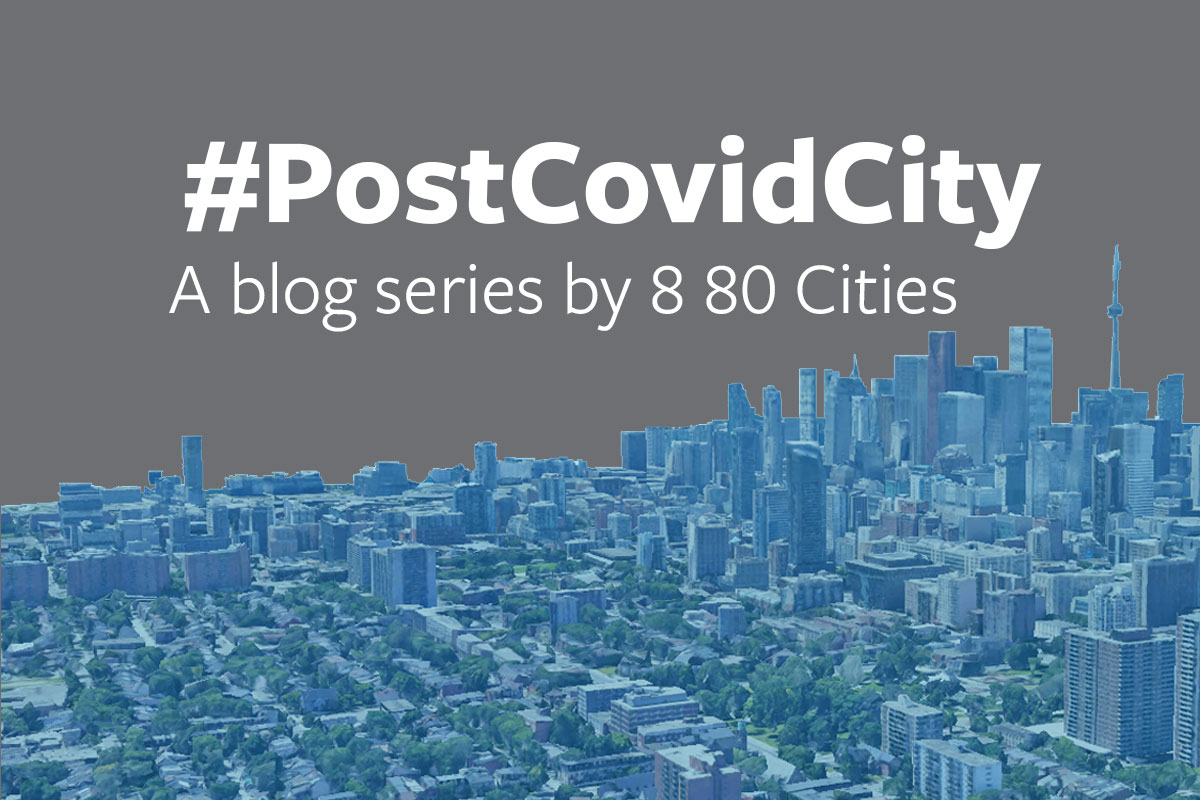
28 May #POSTCOVIDCITY: Let’s Take This Summer to Rethink Winter
#POSTCOVIDCITY is an 8 80 Cities blog series exploring the impacts of COVID-19 on city-building and public space.
In Toronto, where 8 80 Cities is based, hundreds of summer events have been cancelled to prevent the spread of the coronavirus, but the first warm days of the year still saw crowds of people flock to parks and streets newly opened or rebalanced for pedestrians and cyclists as part of ActiveTO. Many people followed physical distancing guidelines, while some did not. Outside of the pandemic, this kind of spring fever is likely familiar to many cities like ours that don’t do enough to invite people into public spaces in the winter, forcing summer to be a concentrated time of excitement, exploration, and connection to make up for a winter spent hunching our shoulders against bitter winds on grey streets.
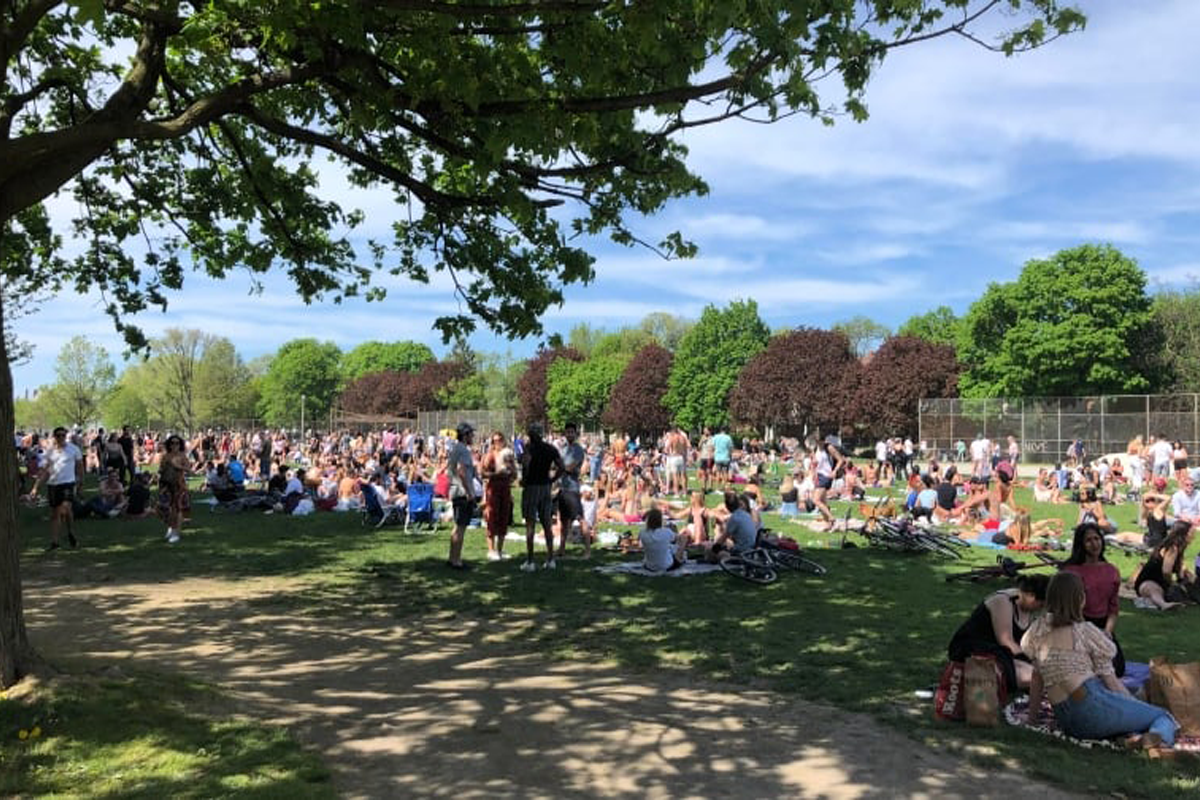
Toronto’s Trinity Bellwoods Park filled with people on one of the first warm weekends of the year (credit: Beatrice Vaisman)
In other words, though COVID-19 restrictions have certainly played a role in tempting us into crowded parks, the potential loss of our typical summer is especially “challenging, culturally and psychologically” because our winters feel so long. When winter is seen as intrinsically harsh, bleak, and boring, we place a lot of responsibility on summer to supply a year’s worth of vibrancy in communities all in one season. For decades, we have designed our streets, parks, and public spaces solely around the few months we get of warm weather, under the assumption that nobody would want to be outside in the cold. Now, as we continue physical distancing through the summer, it’s worth revisiting our thinking about winter public life.
In Toronto and other cold-weather cities, the lack of winter investment has been a self-fulfilling prophecy. Parts of our cities that are lively and inviting in the summer, from parks to squares to courtyards, fall silent in the winter because they are not designed for winter. COVID-19 has highlighted the pain of loneliness and social isolation brought on by physical distancing, but that pain is already exacerbated every winter when design and policy decisions trap us indoors in the colder months. The numerous mental and physical health impacts of social isolation have an especially profound effect on vulnerable populations like older adults and people with disabilities, who are also more vulnerable to COVID-19.
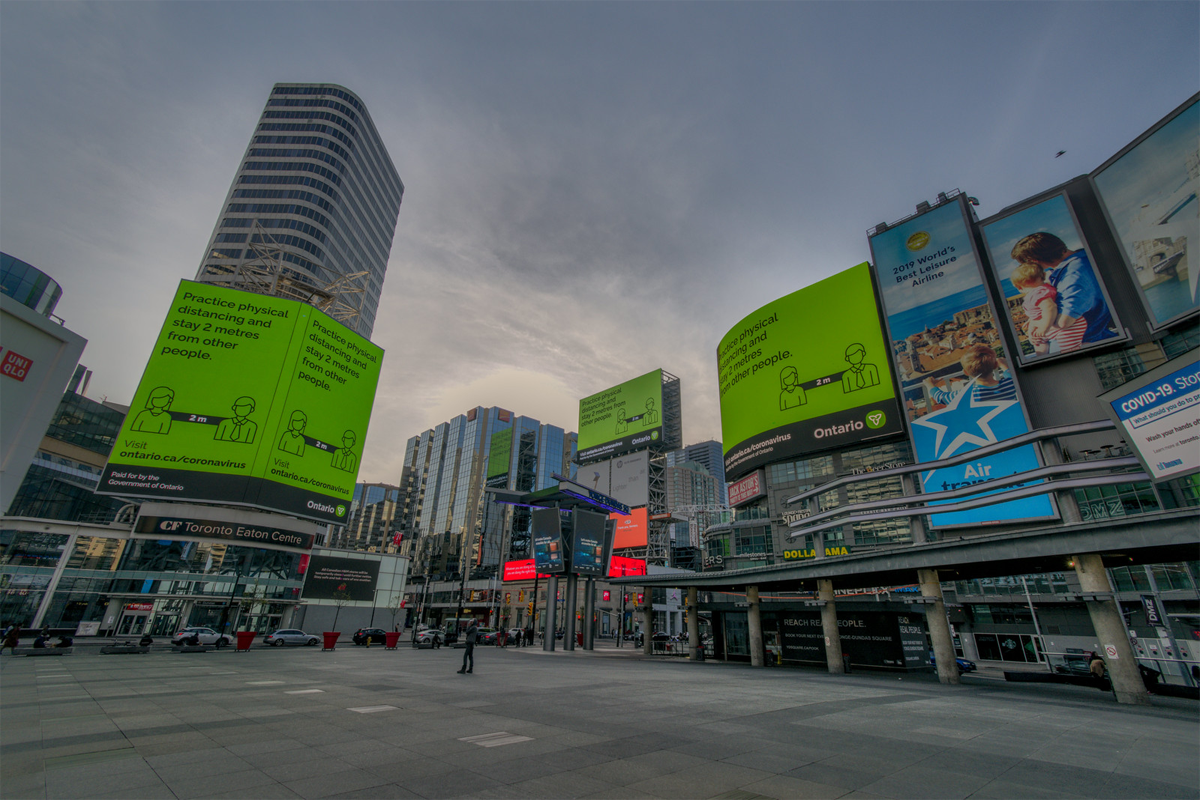
Toronto’s Yonge-Dundas Square usually hosts large summertime concerts and festivals but it’s not as appealing in the winter (credit: Marc Mitanis)
Among the lessons we take from COVID-19 should be the importance of preventing disconnection and improving health outcomes in our cities through more thoughtful investment in our civic commons. We are more aware than ever of the importance of spending time outside for both physical and mental well-being. Beyond providing better access to warm clothing and adequate housing in the winter, the following are ways that we can make winter more liveable by making our outdoor spaces more inviting, so that we can create community and vibrancy post-pandemic and year-round.
1. Remove snow and ice
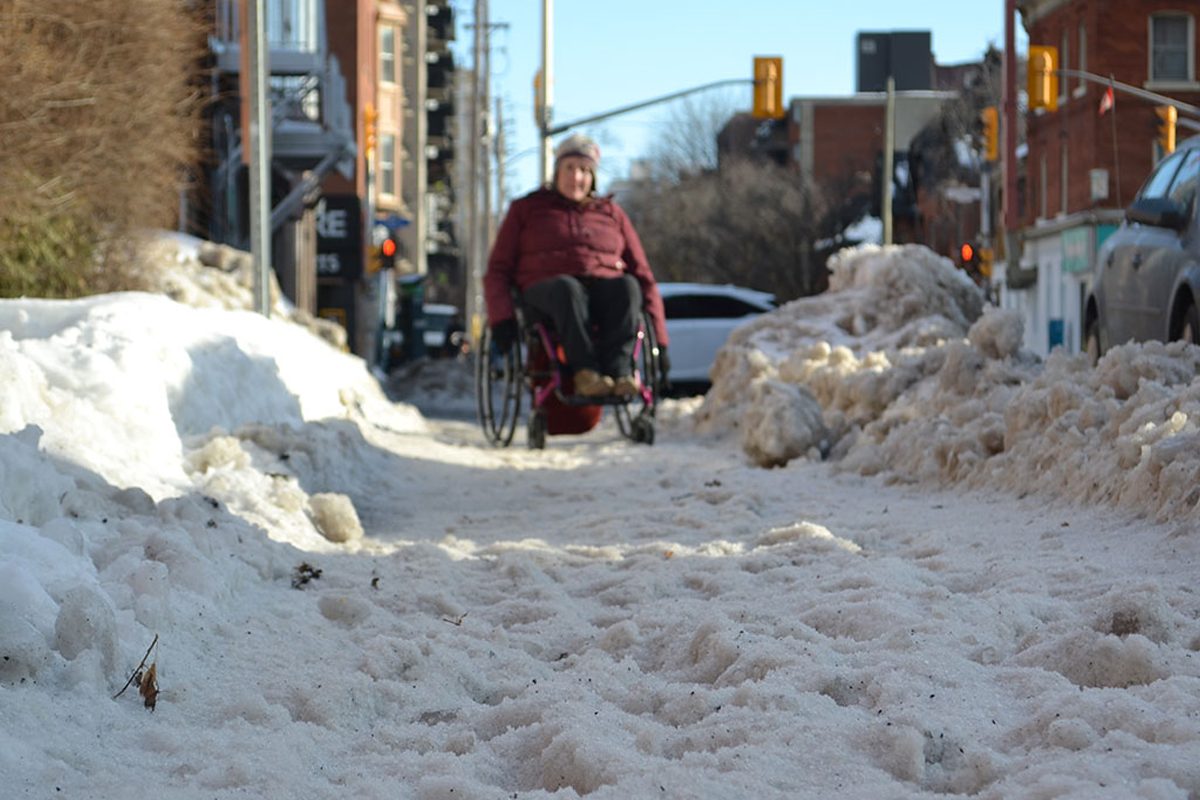
Snow and ice prevent people who use mobility devices from accessing public space in the winter (credit: Alexandra Elves)
Snow and ice are the most talked-about barriers preventing people from getting outside in the winter. Older adults, people with disabilities, and parents caring for babies are all groups at higher risk of social isolation, and they are also groups for whom a well-founded fear of slipping can be so overwhelming that it keeps them indoors. Unobstructed sidewalks and bike lanes are just as vital after a snowstorm as they are in the height of summer. Investing in city-wide municipal sidewalk and bike lane snow clearance would ensure that our most vulnerable populations have independence and the opportunity to seek connection and care year-round.
2. Make winter feel less harsh
Strong winds and cold temperatures can create an uncomfortable walking and cycling experience on main streets, making it harder for neighbourhood residents to run errands and stay physically active in the winter, and for storefront businesses to attract valuable foot traffic. The same factors can also make it harder for people to enjoy physical activity in local parks during wintertime. Luckily, streetscape and public space design decisions can make a real difference in mitigating winter wind and cold.
The most straightforward solution to the problem of wind is to plant more trees in public spaces. The University of British Columbia found that street trees can cut prevailing wind speeds in half, a fact that researcher Marco Giometto notes “would make a noticeable difference to someone walking down the street. For example, a 15 km/h (9 mph) wind speed is pleasant, whereas walking in 30 km/h (18 mph) wind is more challenging.” Farmers and landscapers have long used trees as windbreaks along the edges of open spaces; lees in parks can similarly block winter gales and invite summer breezes.
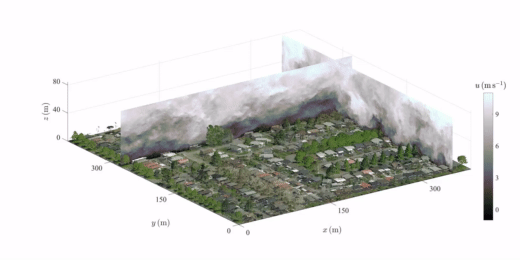
Wind patterns on tree-lined streets, according to a UBC study (credit: Marco Giometto / UBC)
In northern Alberta, Edmonton’s Winter Design Guidelines recognize that “capturing direct sunshine and blocking wind can make an outdoor public space feel 10°C (18°F) warmer.” To reduce cold in the winter, the guidelines recommend widening sidewalks to accommodate more trees, varying the setbacks of adjacent buildings to create “suntraps” and wind shelters, and developing safe and comfortable pedestrian routes along narrow alleys or laneways, which provide better weather protection for pedestrians than wide roads.
On some streets, the height and shape of the buildings is the issue. Skyscrapers cast long, cooling shadows and act like canyon walls, encouraging downdrafts that lead to high winds at the street level. As a solution, Ralph Knowles’ “solar envelope” building model creates fewer shadows, while wider podiums for high-rise towers prevent downdrafts and may reduce average wind speeds for pedestrians by 29%.
In brand new communities, architectural theorist Ralph Knowles also suggests rotating the typical north-south street grid to become northeast-southwest for improved street-level sun exposure. Or why not reinvent the relatively recent concept of street grids altogether? In a new high-density development in Malmö, Sweden, the streets have been deliberately arranged in a non-grid pattern to shield pedestrians from high winds in the area.
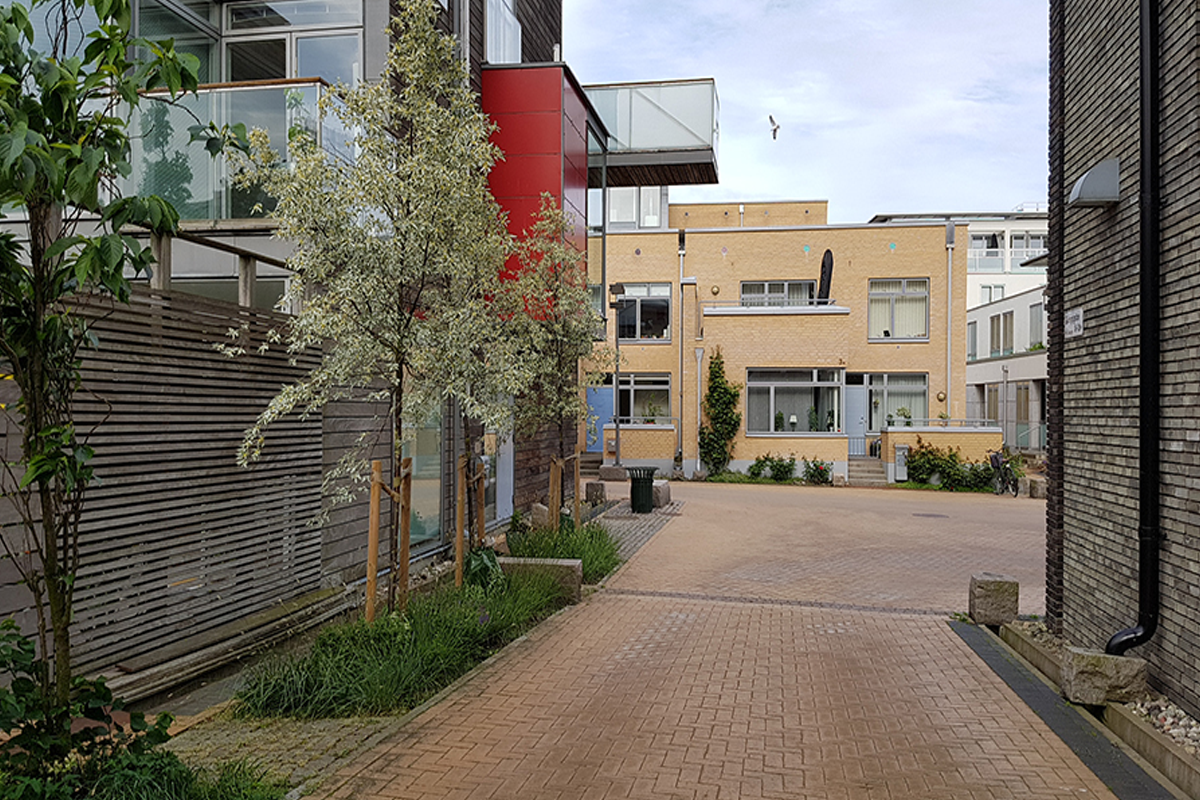
Medieval-inspired non-grid pattern streets in Malmö, Sweden (credit: Dubbeldam)
There are many creative engineering solutions that can help us feel more comfortable in winter. The key message here is that winter in the city does not have to feel as harsh as it does; street and public space design have a role to play.
3. Provide shelter and warmth
When temperatures dip, it’s easier to spend more time outdoors in the winter when we can find some respite from the cold before heading out again.
Cities can begin by ensuring more access to public washrooms that are kept open year-round, not just for toilet facilities but also to offer warmth to those who need it. Health journalist André Picard notes that public washrooms are not a superfluous luxury, but a part of public infrastructure. Older people, new parents, people with chronic health conditions, menstruating people, and children are all more able to spend longer hours in public spaces when they have access to clean, well-maintained, well-stocked public washrooms.
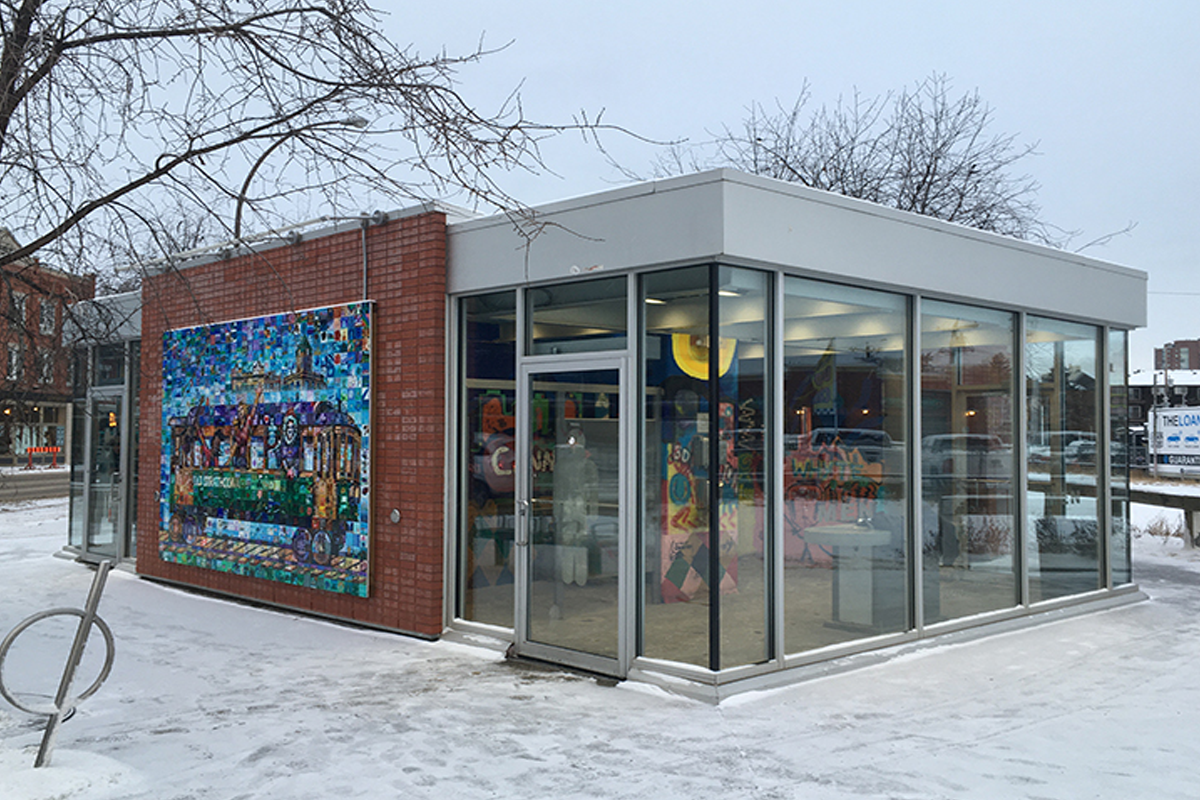
A public washroom that is kept open year-round in Edmonton, Alberta (credit: City of Edmonton)
In the advent of COVID-19, author Shawn Micallef also highlights the importance of public washrooms now that handwashing is acknowledged as a primary defence against the coronavirus. In Toronto, where drop-in centres have been closed, our municipal government is providing free access to showers, toilets, and drinking water for vulnerable populations at strategic locations across the city, providing a great model for other cities.
Beyond public washrooms, parks and public spaces would benefit from more shelter structures providing wind protection in the winter and shade in the summer. Winnipeg, Manitoba runs an annual art and architecture competition called Warming Huts, during which fun, sculptural structures are temporarily built on the frozen Red River to provide shelter for hundreds of ice skaters. A permanent version of such a program could create interesting and attractive shelters for parks and public squares, and at open-air bus stops.
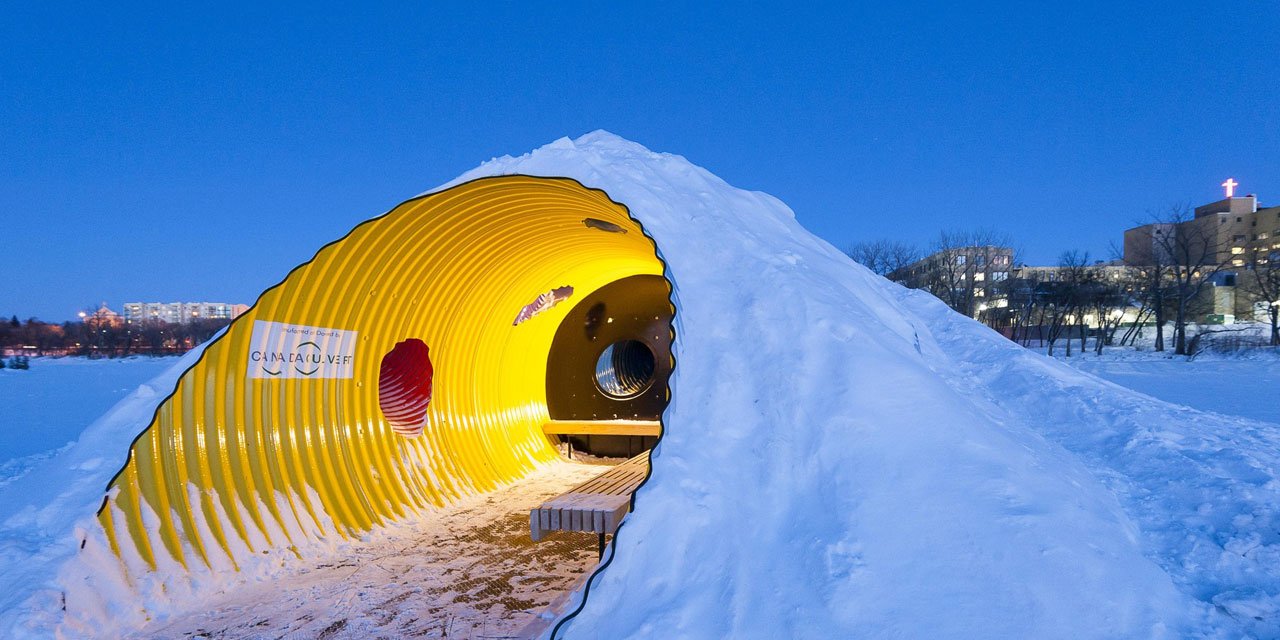
Winnipeg’s Warming Huts provide shelter for ice skaters (credit: Warming Huts)
Finally, with physical distancing measures likely to reduce indoor space in restaurants, now may be the time to incentivize expanding seating into year-round outdoor restaurant patios that use heat lamps and blankets to keep their patrons warm. Edmonton’s and Toronto’s outdoor patios can help animate street life, even in the winter.
4. Create light and colour
It’s worth saying that it’s not as appealing to spend time in ugly spaces, and our winter parks and streets are often unattractive.
Cities can create more inviting parks and streets by using soft, welcoming lighting on trees and fences, or inside awnings or canopies that can also provide weather protection. Toronto’s Distillery District neighbourhood uses overhead twinkle lights to create a cozy atmosphere for its outdoor winter market, while Edmonton uses colourful and creative lights to “create a special winter atmosphere” in its downtown and historic districts. Both Montreal and Toronto have outdoor winter light festivals that take advantage of darker evenings.
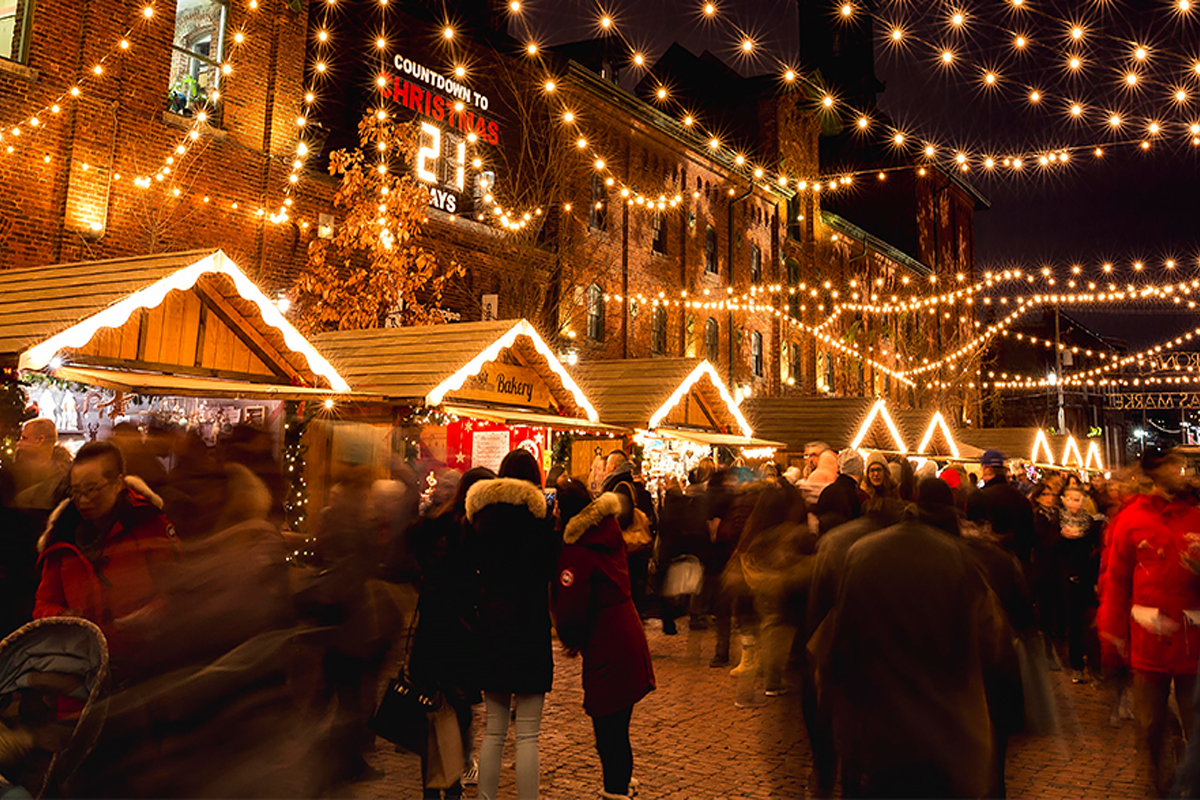
Overhead twinkle lights help attract people to Toronto’s Distillery District in winter (credit: Distillery District)
Winter is often grey or muddy brown, but in St. John’s, Newfoundland, brightly painted houses enliven the winter cityscape. Thoughtful winter landscaping can also provide pops of colour from hardy or evergreen plants like red osier dogwood, winterberry trees or other types of holly, and varieties of heather.

Colourful houses stand out in winter in St. John’s, Newfoundland (credit: Adrian J Warren)
All of these colour and lighting choices help bring residents out to enjoy their streets and reduce social isolation.
5. Spark joy
Most importantly, winter cities that invest in programming and maintenance in the winter reap the rewards of a vibrant public realm all year. Tromsø, Norway, which is located so far north that it does not experience any sunlight for three months each year, is a model for how to animate public spaces in winter. For over 30 years, the city has held events like half-marathons lit by candles, an outdoor film festival, music concerts, activities, and public art installations in the depths of winter. Journalist Kari Liebowitz notes that the main street is always busy, and research has found that “residents of Tromsø have lower rates of wintertime depression than would be expected given the long winters and high latitude.” In Tromsø, winter is enjoyed, not endured, thanks to a commitment to outdoor public life that offers inspiration for all winter cities.

The Tromsø International Film Festival includes outdoor showings (credit: Tromsø International Film Festival)
COVID-19 has thrown into relief how important it is to feel connected to our communities through public space and public life. Rather than allowing winter to take that connection away each year, it’s time that we invest in addressing the challenges of winter and supporting the physical and mental well-being of people living in cities year-round. The Winter Cities Institute and World Winter Cities Association for Mayors are excellent resources for strategies and insights on how public life can be improved during the winter. We at 8 80 Cities are also supporting three U.S. cities to reduce social isolation and increase public life in winter through our Wintermission program. With committed leadership and creative solutions, cities can help everyone embrace the winter season.
Click here for other posts in our #POSTCOVIDCITY blog series.



